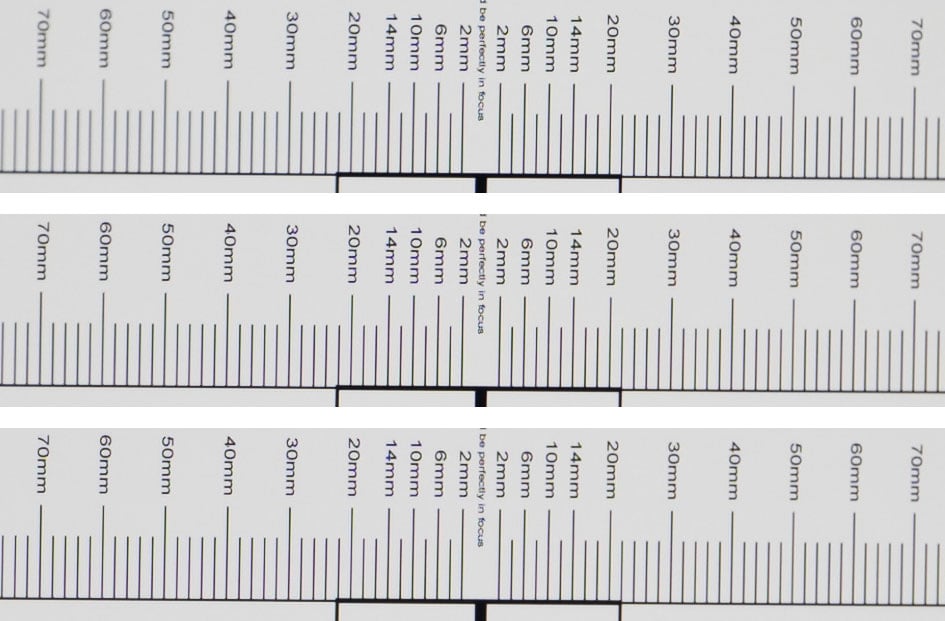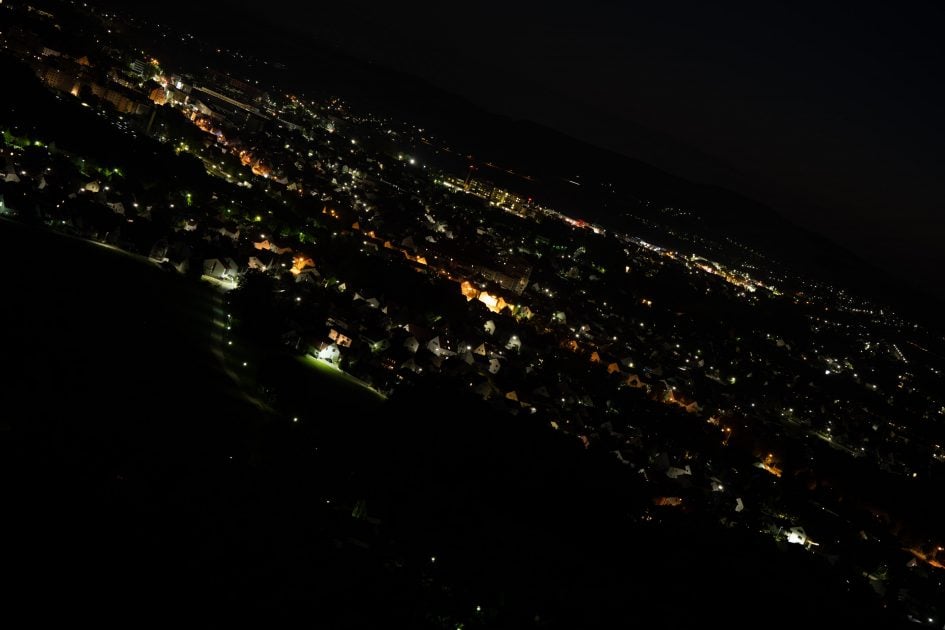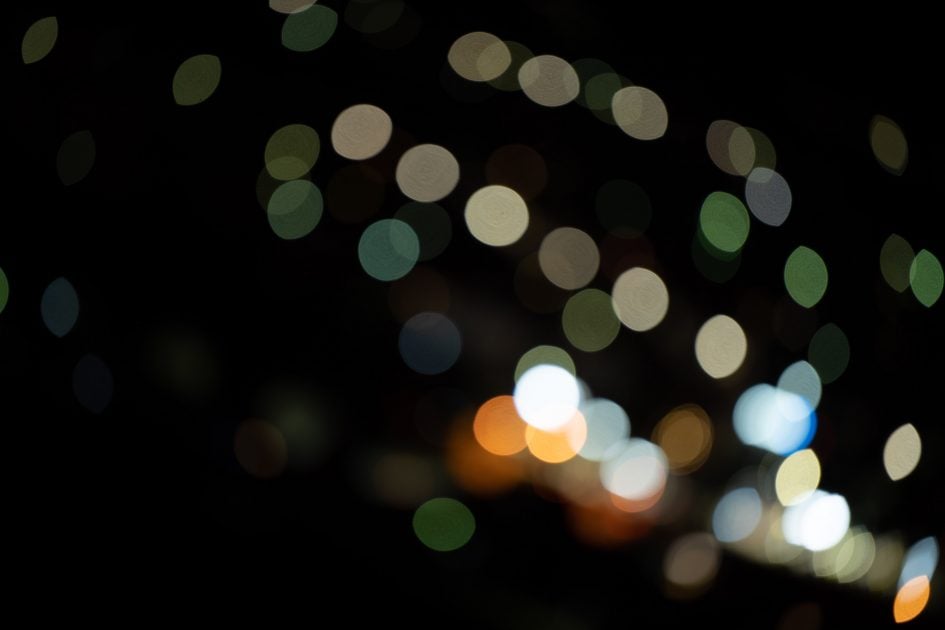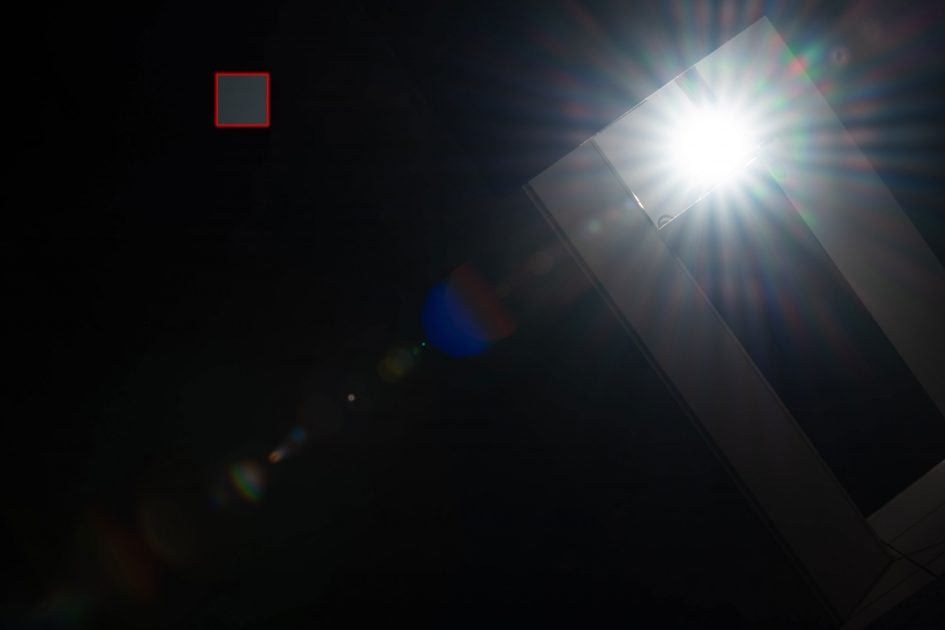Nikon Z 70-200mm f2.8 VR S review
-
-
Written by Thomas
Quality
Testing: Longitudinal Chromatic Aberration and focus shift
Lenses with focal ratios of f2.8 or larger are often prone to longitudinal color aberrations (loCA, a.k.a. “axial color” or “bokeh CA”). These normally show up as magenta coloration in the foreground and greenish hues in the background and are not easily corrected in post-processing. The new Z-Nikkor has almost no loCA. Very good!
Nikon Z 70-200mm f2.8 VR S Longitudinal Chromatic Aberration (loCA)

Above: 100% crops at 70mm, from top to bottom: f2.8, f4.0, f5.6; left = foreground, right = background

Above: 100% crops at 200mm, from top to bottom: f2.8, f4.0, f5.6; left = foreground, right = background
There’s also no focus shift to speak of although at 200mm the foreground becomes sharper faster than the background. The Nikon AF-S 70-200mm f2.8E VR shows a bit more loCA and had pretty strong focus shift.
The following real life shot shows that the Nikon Z 70-200mm f2.8 VR S produces only a bit of bluish fringing around high-contrast edges in the focal plane and no green outlining around background subjects:
Above: Nikon Z 70-200mm f2.8 VR S at 70mm, f2.8, 100% crop, click image for 4k version, here for large original
Sharpness and contrast
Let’s have a look at the theoretical performance of the new Nikon Z 70-200mm f2.8 VR S first and compare it to the performance of the Nikon 70-200mm f2.8E VR:

Above: MTF Nikon Z 70-200mm f2.8 VR S at 70mm, f2.8 (left) and 200mm, f2.8 (right)

Above: MTF Nikon AF-S 70-200mm f2.8E VR at 70mm, f2.8 (left) and 200mm, f2.8 (right)
These MTF charts show the computed lens-performance of lenses wide open without influence of diffraction. Higher values are better (more contrast) and the closer the line-pairs are together the less astigmatism (= resolution depends on the orientation of the test-pattern) the lens has. The x-axis displays the distance from the optical axis (=center of the sensor) in mm. I’ll show you the real-life performance at 4 mm (center), 13 mm (APS-C/DX-corner), and 20 mm (FF/FX-corner) on a 45MP Nikon Z7 body.
Changes in the optical construction have lifted resolution and contrast of the new zoom lens compared to the F-Nikkor – which was the best 70-200mm f2.8 zoom lens you could buy for your Nikon camera so far. Especially the corners have been given a boost. Let’s see how this theoretical performance translates into real life results in the sharpness test based on Siemens-stars. Processing was done in Lightroom 9.4/CRAW 12.4 from RAW to Adobe Color profile with the built-in lens profile applied (Vignette control=N, Diffraction compensation=OFF, Auto distortion control=ON). Noise-reduction is set to 0, sharpening to 50/0.5/36/10, with no extra tone, color, or saturation adjustment. White-balance was adjusted to a neutral white and I did some exposure compensation to make the brightness of all crops match. So you will not see light fall-off in the corners.
The following are all 100% crops!
First up is an overview of the wide-open performance at different focal lengths. You can jump to the detailed results at different apertures and comparisons with the competition by clicking on the crops of the respective focal length.
Nikon Z 70-200mm f2.8 VR S; 100% crop from center, DX-corner, FX-corner
Above: 70mm, f2.8
Above: 100mm, f2.8
Above:140mm, f2.8
Above: 200mm, f2.8
Nikon’s new zoom lens looks very sharp in the DX image circle throughout the zoom-range with a slight softening towards the FX-corner. The lens also exhibits only very little field curvature over its zoom range. Very good!
If you want to see all the details and comparisons with the Nikon AF-S 70-200mm f2.8E VR, read on. Or you can fast-forward to the performance at long distances.
The following 100% crops for each focal length show the new Nikon Z 70-200mm f2.8 VR S from f2.8 down to f11 compared to the Nikon 70-200mm f2.8E VR (shot on a D850 without application of a lens profile) at f2.8.
Performance at 70mm:
Nikon Z 70-200mm f2.8 VR S at 70mm; 100% crop from center, DX-corner, FX-corner

Above: Nikon Z 70-200mm f2.8 VR S at 70mm, f2.8

Above: Nikon AF-S 70-200mm f2.8E VR on a D850 at 70mm, f2.8

Above: Nikon Z 70-200mm f2.8 VR S at 70mm, f4.0

Above: Nikon Z 70-200mm f2.8 VR S at 70mm, f5.6

Above: Nikon Z 70-200mm f2.8 VR S at 70mm, f8.0

Above: Nikon Z 70-200mm f2.8 VR S at 70mm, f11
At 70mm focal length the new Z-Nikkor and the F-Nikkor are neck-and-neck in the center with the F-Nikkor suffering from a tiny bit of loCA. In the DX-corner the F-Nikkor is sharper than the Z-Nikkor which in turn wins the FX-corner.
Performance at 100mm:
Nikon Z 70-200mm f2.8 VR S at 100mm; 100% crop from center, DX-corner, FX-corner

Above: Nikon Z 70-200mm f2.8 VR S at 100mm, f2.8

Above: Nikon AF-S 70-200mm f2.8E VR on a D850 at 105mm, f2.8

Above: Nikon Z 70-200mm f2.8 VR S at 100mm, f4.0

Above: Nikon Z 70-200mm f2.8 VR S at 100mm, f5.6

Above: Nikon Z 70-200mm f2.8 VR S at 100mm, f8.0

Above: Nikon Z 70-200mm f2.8 VR S at 100mm, f11
Same story as at 70mm: the new Z-Nikkor has the better FX-corner.
Performance at 140mm:
Nikon Z 70-200mm f2.8 VR S at 140mm; 100% crop from center, DX-corner, FX-corner

Above: Nikon Z 70-200mm f2.8 VR S at 140mm, f2.8

Above: Nikon AF-S 70-200mm f2.8E VR on a D850 at 150mm, f2.8

Above: Nikon Z 70-200mm f2.8 VR S at 140mm, f4.0

Above: Nikon Z 70-200mm f2.8 VR S at 140mm, f5.6

Above: Nikon Z 70-200mm f2.8 VR S at 140mm, f8.0

Above: Nikon Z 70-200mm f2.8 VR S at 140mm, f11
At 140mm focal length both lenses become almost indistinguishable.
Performance at 200mm:
Nikon Z 70-200mm f2.8 VR S at 200mm; 100% crop from center, DX-corner, FX-corner

Above: Nikon Z 70-200mm f2.8 VR S at 200mm, f2.8

Above: Nikon AF-S 70-200mm f2.8E VR on a D850 at 200mm, f2.8

Above: Nikon Z 70-200mm f2.8 VR S at 200mm, f4.0

Above: Nikon Z 70-200mm f2.8 VR S at 200mm, f5.6

Above: Nikon Z 70-200mm f2.8 VR S at 200mm, f8.0

Above: Nikon Z 70-200mm f2.8 VR S at 200mm, f11
At 200mm focal length the new Z 70-200mm f2.8 VR S is a bit sharper in the center but a bit softer in the FX-corner compared to the Nikon AF-S 70-200mm f2.8E VR.
Overall Nikon’s new Z 70-200mm f2.8 VR S zoom lens repeats the excellent performance of its F-mount sibling with a slightly better defined FX-corner at shorter focal lengths.
Performance at long distances
The Siemens-star test-targets are shot at a distance of 45x focal length (i.e. at around 3m for 70mm focal length). But performance of lenses also depends on the shooting distance. Therefore I present another series of test-shots of a city around 1 km away. Processing was done in Lightroom 9.4/CRAW 12.4 from RAW to Adobe Color profile with the built-in lens profile compensating CA, distortions, and vignetting. Noise-reduction is set to 0, sharpening to 50/0.5/36/10, with no extra tone, color, or saturation adjustment. I used manual focus at the largest aperture and did not change focus for other apertures. All shots were made at ISO 64 and image stabilization switched off.
Following is an overview of the wide-open performance at different focal lengths. You can jump to the detailed results at different apertures and comparisons with the Nikon 70-200mm f2.8E VR by clicking on the crops of the respective focal length. As usual I have selected the diagonal that provided the better corner results as almost any lens is a bit decentered.
Nikon Z 70-200mm f2.8 VR S; 100% crop from center, DX-corner, FX-corner
Above: 70mm, f2.8
Above: 100mm, f2.8
Above: 140mm, f2.8
Above: 200mm, f2.8
In this long-distance test the new zoom lens looks (again) very right into the extreme corners of a high resolution full-frame sensor.
If you want to see all the details and comparisons with the Nikon AF-S 70-200mm f2.8E VR, read on. Or fast-forward to the next chapter on vignetting and distortions.
The main image shows the complete scene wide open to give you an impression of the angle of view and to judge vignetting. Following the main image are 100% crops from the center, DX-corner, and FX-corner for each focal length from the new Nikon Z 70-200mm f2.8 VR S down to f11. For comparison I use the Nikon AF-S 70-200mm f2.8E VR shot on a different day on a D850 without application of a lens profile. The day the Z-Nikkor was shot had a higher humidity which results in a slightly lower overall contrast in comparison to the F-Nikkor .
You can access the large originals but please respect our copyright and only use those images for personal use.
Results at 70mm:
Above: Nikon Z 70-200mm f2.8 VR S at 70mm, f2.8
Above: Nikon Z 70-200mm f2.8 VR S at 70mm, f2.8; 100% crops, click image for 4k version, here for large original
Above: Nikon AF-S 70-200mm f2.8E VR on a D850 at 70mm, f2.8; 100% crops, click image for 4k version, here for large original

Above: Nikon Z 70-200mm f2.8 VR S at 70mm, f4.0

Above: Nikon Z 70-200mm f2.8 VR S at 70mm, f5.6

Above: Nikon Z 70-200mm f2.8 VR S at 70mm, f8.0

Above: Nikon Z 70-200mm f2.8 VR S at 70mm, f11
Results at 100mm:
Above: Nikon Z 70-200mm f2.8 VR S at 100mm, f2.8
Above: Nikon Z 70-200mm f2.8 VR S at 100mm, f2.8; 100% crops, click image for 4k version, here for large original
Above: Nikon AF-S 70-200mm f2.8E VR on a D850 at 105mm, f2.8; 100% crops, click image for 4k version, here for large original

Above: Nikon Z 70-200mm f2.8 VR S at 100mm, f4.0

Above: Nikon Z 70-200mm f2.8 VR S at 100mm, f5.6

Above: Nikon Z 70-200mm f2.8 VR S at 100mm, f8.0

Above: Nikon Z 70-200mm f2.8 VR S at 100mm, f11
Results at 140mm:
Above: Nikon Z 70-200mm f2.8 VR S at 140mm, f2.8
Above: Nikon Z 70-200mm f2.8 VR S at 140mm, f2.8; 100% crops, click image for 4k version, here for large original
Above: Nikon AF-S 70-200mm f2.8E VR on a D850 at 150mm, f2.8; 100% crops, click image for 4k version, here for large original

Above: Nikon Z 70-200mm f2.8 VR S at 140mm, f4.0

Above: Nikon Z 70-200mm f2.8 VR S at 140mm, f5.6

Above: Nikon Z 70-200mm f2.8 VR S at 140mm, f8.0

Above: Nikon Z 70-200mm f2.8 VR S at 140mm, f11
Results at 200mm:
Above: Nikon Z 70-200mm f2.8 VR S at 200mm, f2.8
Above: Nikon Z 70-200mm f2.8 VR S at 200mm, f2.8; 100% crops, click image for 4k version, here for large original
Above: Nikon AF-S 70-200mm f2.8E VR on a D850 at 200mm, f2.8; 100% crops, click image for 4k version, here for large original

Above: Nikon Z 70-200mm f2.8 VR S at 200mm, f4.0

Above: Nikon Z 70-200mm f2.8 VR S at 200mm, f5.6

Above: Nikon Z 70-200mm f2.8 VR S at 200mm, f8.0

Above: Nikon Z 70-200mm f2.8 VR S at 200mm, f11
Both the new Nikon Z 70-200mm f2.8 VR S and the Nikon AF-S 70-200mm f2.8E VR are excellent performers which are so sharp that you can clearly detect the softening from diffraction setting it at f11. The only advantage of the new Z-Nikkor over the F-Nikkor is a slightly sharper FX-corner at 70mm and 100mm focal length.
Vignetting and distortions
To make it easier to see light fall-off in the corners of a full-frame sensor I’ve arranged a series of three shots each with the new Nikon at f2.8, f4.0, and f5.6. All images were developed to the same brightness in the center and are shown with vignette control Off (1st row) resp. Normal (2nd row):

Above: Nikon Z 70-200mm f2.8 VR S at 70mm focal length

Above: Nikon Z 70-200mm f2.8 VR S at 200mm focal length
At 70mm vignetting is relatively mild at f2.8 and practically irrelevant from f4.0 onward. At 200mm vignetting is stronger and the sample images above show that even with the lens profile applied it is not completely eliminated. With vignette control set to normal the extreme corners are lifted about 0.5 EV. Adobe’s RAW converter automatically applies vignette control as it was set in camera – but you cannot alter the setting in postprocessing.
The same applies to distortion control: Adobe’s RAW converter automatically applies what was set in camera – but you cannot alter it in postprocessing. Distortions are very low at 70mm focal length and turn to pin-cushion at 200mm (see below).
Distortions: Nikon Z 70-200mm f2.8 VR S at 70mm, as is (top) / with lens-profile (bottom)
Distortions: Nikon Z 70-200mm f2.8 VR S at 200mm, as is (top) / with lens-profile (bottom)
Rendering of point-light sources at night-shots
Night-shots pose a different challenge for lenses as the contrast is even higher than under bright sun and point-light sources can reveal some weaknesses such as coma, haloing and colour-aberrations that do not show up as prominently in other test-shots. The 100% crops below the main image show the effect of coma in the FX-corner of the new Z-Nikkor compared to the F-Nikkor at various apertures:
Above: Nikon Z 70-200mm f2.8 VR S at 70mm, f2.8; click image for 4k version, here for large original

Above: Nikon Z 70-200mm f2.8 VR S at 70mm; 100% crops from the FX-corner at f2.8 (left), f4.0 (middle), f5.6 (right)

Above: Nikon AF-S 70-200mm f2.8E VR at 70mm; 100% crops from the FX-corner at f2.8 (left), f4.0 (middle), f5.6 (right)
On the short end the new Z 70-200mm f2.8 VR S shows practically no coma while the AF-S 70-200mm f2.8E VR produces a bit of coma at f2.8.
Rendering of out-of-focus point-light sources
This test is for the rendering of point-light sources in an out-of-focus background. The circle of confusion that is produced by this test is pretty indicative of Bokeh performance (in the background) and light fall-off. Ideally the out-of-focus image of the point-light is evenly lit and perfectly circular, with no “onion-rings”, and without coloration. Large aperture lenses normally produce an effect known as “cat’s eye” the further away from the optical axis the point-light is projected. This is due to optical vignetting in the lens barrel when light enters the lens from an angle.
The new Z-Nikkor is first, followed by the F-Nikkor. Crops are from near the center, DX-corner, and FX-corner resized to make them comparable across all my reviews.
Above: Nikon Z 70-200mm f2.8 VR S at 200mm, f2.8
Above: Nikon Z 70-200mm f2.8 VR S at 200mm, f2.8; click image for 4k version
Above: Nikon AF-S 70-200mm f2.8E VR at 200mm, f2.8; click image for 4k version
Both lenses exhibit no onion rings and the light-distribution across the circle is very even. Outlining is moderate and shows no green coloration from loCA. The biggest visible difference between the lenses above is the stronger cat’s eye effect of the new Z-Nikkor over the F-Nikkor. This may generate some nervousness in out-of-focus areas there and create an effect called “swirly Bokeh”.
Now let’s see how this analysis of out-of-focus point-light sources translates into Bokeh-performance shooting a book-shelf. Crops are from the foreground, middle-ground, and background resized to make them comparable across all my reviews. I used the longest focal length that I could to produce a comparable shot to my other reviews which was in the case of the new Z-Nikkor 165mm. The F-Nikkor was zoomed in to 150mm to achieve the same magnification.
Above: Nikon Z 70-200mm f2.8 VR S at 165mm, f2.8
Above: Nikon Z 70-200mm f2.8 VR S at 165mm, f2.8; click image for 4k version, here for large original
Above: Nikon AF-S 70-200mm f2.8E VR on a D810 at 150mm, f2.8; click image for 4k version, here for large original
Here’s another crop (now at 100%) from the same image showing the ruler. The slight difference in magnification stems from the different resolution of the Z7 versus the D810.
Above: Nikon Z 70-200mm f2.8 VR S at 165mm, f2.8; click image for 4k version, here for large original
Above: Nikon AF-S 70-200mm f2.8E VR on a D810 at 150mm, f2.8; click image for 4k version, here for large original
If you don’t look too close (i.e. around 40-50% magnification) Bokeh looks pretty similar between both lenses: Somewhat nervous in the foreground, relatively well-blurred background, and a smooth transition zone (middle-ground) without coloration from loCA. But the 100% crops from the ruler show that the Nikon Z 70-200mm f2.8 VR S can produce some nasty double contours / outlining on fine structures near the plane of sharpest focus. But the further away the background is the more rare this effect becomes.
Close-up performance
The new Z Nikkor goes down to 1:4.6 magnification which is a little less than the F Nikkor. The following images were shot at 70mm focal length and 1:4.8 magnification where the area of sharp focus is just 115 x 173mm. The crops shown below are from 0mm, 6mm, and 17mm off the center of the sensor respectively:

Above: Nikon Z 70-200mm f2.8 VR S at 70mm, f2.8; 100% crops

Above: Nikon Z 70-200mm f2.8 VR S at 70mm, f5.6; 100% crops

Above: Nikon Z 70-200mm f2.8 VR S at 70mm, f11; 100% crops
The Nikon Z 70-200mm f2.8 VR S produces pretty sharp results in the inner image circle at 70mm focal length even wide open. But to get the outer areas sharp the lens needs to be stopped down to at least f11.
Following is a sequence of close-up shots at 200mm focal length and 1:4.6 magnification with the crops from 0mm, 8mm, and 18mm off the center of the sensor respectively:

Above: Nikon Z 70-200mm f2.8 VR S at 200mm, f2.8; 100% crops

Above: Nikon Z 70-200mm f2.8 VR S at 200mm, f5.6; 100% crops

Above: Nikon Z 70-200mm f2.8 VR S at 200mm, f11; 100% crops
At 200mm focal length the lens produces very usable results when stopped down to f5.6 or f8.0 even in a larger image circle. Sharper than the Nikon AF-S 70-200mm f2.8E VR.
The following example was shot through the Canon 500D, a 2 diopter close-up filter. With the Nikon Z 70-200mm f2.8 VR S at 200mm you can achieve magnifications of 1:2.5 when the lens is set to infinity or something around 1:1.9 when the lens is focused to 1m. The resulting image quality is very usable even up into the FX corners especially when you focus closer. The following shot has a magnification of 1:1.9 where the area of sharp focus is only 46 x 69mm. The 500D was mounted in reverse and the crops are from 0mm, 12mm, and 21mm off the center of the sensor respectively:

Above: Nikon Z 70-200mm f2.8 VR S plus Canon 500D close-up filter at 200mm, f5.6; 100% crops
Flare, ghosting, and sunstars
Catching a strong light-source shining directly into the lens is always a risky business: it could produce strange colorful ghost-images or reduce contrast considerably through flare and glare. The appearance of flare and ghosting depends on factors like the aperture and the angle of the light hitting the lens. So to judge the proclivity of the new Nikon Z 70-200mm f2.8 VR S for these artifacts I went through a series of well calculated shots against a strong light source to provoke glare and ghosting. The lens hood was mounted in all shots. Following are two of the more extreme example results. The little bright square inset in the upper left shows the respective area with an exposure compensation of +3 EV to make it easier to see which levels of black the lens renders at that point:
Above: Flare and ghosting. Strong light hitting the Nikon Z 70-200mm f2.8 VR S at 70mm, f11; click image for 4k version or here for +3 EV exposure compensation
Above: Flare and ghosting. Strong light hitting the Nikon Z 70-200mm f2.8 VR S at 70mm, f11; click image for 4k version or here for +3 EV exposure compensation
The Nikon Z 70-200mm f2.8 VR S produces some muted ghosting artifacts and flares and overall contrast is reduced through some veiling glare – but this is clearly better than from the AF-S 70-200mm f2.8E VR. The flare from the upper right corner in the second image only occurs at a very narrow angle when the light-source is just outside the corner.
At f8 or f11 the Nikon Z 70-200mm f2.8 VR S does not produce sunstars that are very well defined. See the image above at f11 or the following 100% crop at f8.
Above: Nikon Z 70-200mm f2.8 VR S at 70mm, f8; click image for 4k version, here for large original
Next check out my sample images!
Check prices on the Nikon Z 70-200mm f2.8 VR S at B&H, Adorama, or Wex. Alternatively get yourself a copy of my In Camera book or treat me to a coffee! Thanks!






























